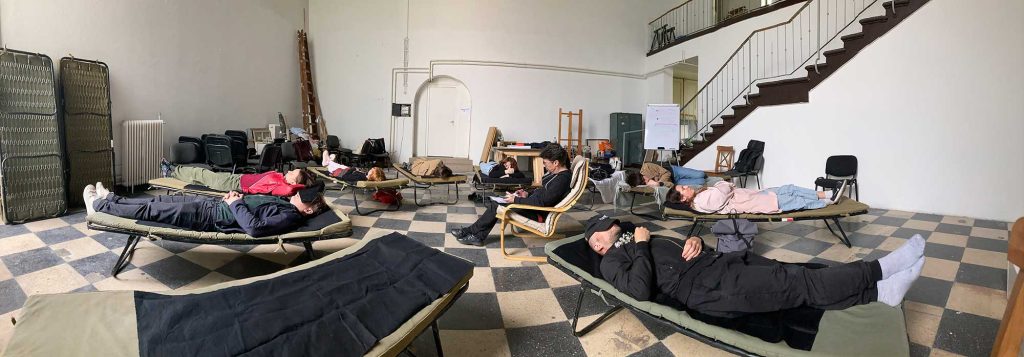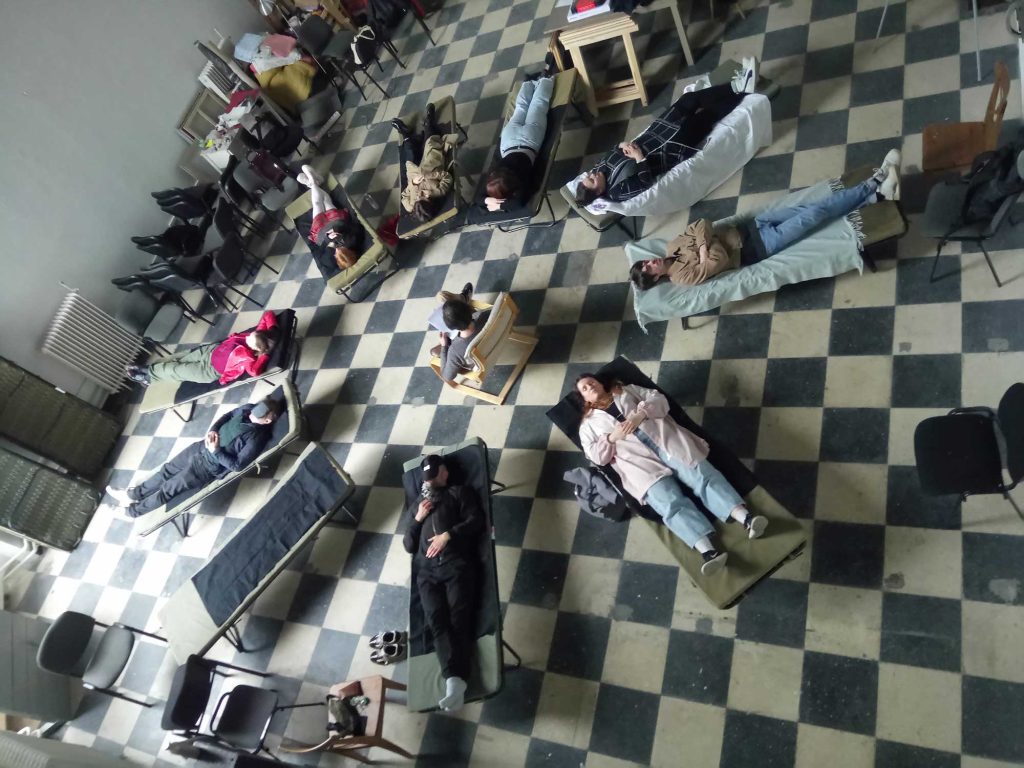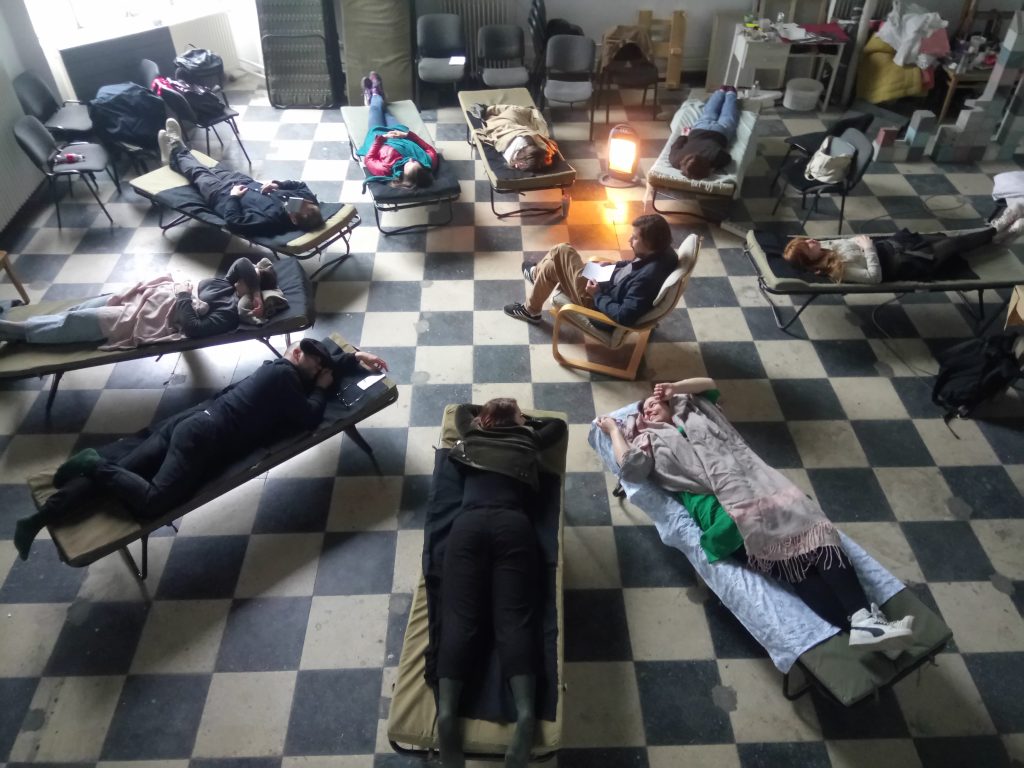Assignment: Please choose and send to the course leaders before the block seminar 3 short excerpts from theoretical texts, which you consider of crucial importance to your research at this point!

Methodology/description/concept:
The experimental exercise developed for the seminar and tested for the first time during our long-week LAB workshop aimed at establishing a connection between the various states of consciousness and creativity discussed widely in the context of educational psychology.
Sleeping and dreaming are recurring themes of art history throughout the ages, nonetheless, many 20th century artists, especially the surrealists, used it as a core concept for their work. While Dalí was engaged in reaching ‘sleeping without sleeping’, André Breton asked: “When will we have sleeping logicians, sleeping philosophers?”, influencing the practice of hundreds of artists later on, like Stilinović, who equaled the sleep of the artists with work.

Since the doctoral students throughout their artistic research should always balance between visual and textual, our experiment aimed at how the hypnagogic state (in between dream and wake) affects the understanding and interpretation of reference texts, offering thus an alternative to the academic close reading, similar to the methodology applied by Sarat Maharaj in 2004, when together with his students, in which they approached and analyzed the theoretical texts ‘edgeways’, ’through their footnotes .

Methodologically the experiments took place on each day, following the lunch break, when the participants had been offered a half hour of siesta time, during which excerpts from theoretical texts – selected by the participants themselves – have been read by the course leaders three times consecutively. In a later session the collective experiences were discussed.
